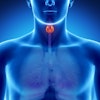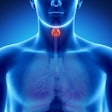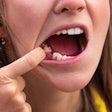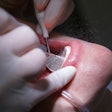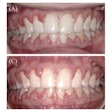The National Institutes of Health has awarded a $1.4 million, four-year grant to Rita Jablonski, PhD, an assistant professor of nursing at Pennsylvania State University to test a technique that can help improve the oral health of dementia patients.
Persons with dementia resist care when they feel threatened, according to Jablonski. In general, these patients cannot care for themselves and need help.
Jablonski and her team introduced an oral hygiene approach called Managing Oral Hygiene Using Threat Reduction (MOUTh) specifically for dementia patients. Many of their strategies focus on making the patient feel more comfortable before and while care is provided.
The study findings will appear in the May/June 2011 issue of Special Care in Dentistry.
"We have come up with 15 strategies -- techniques to help reduce threat perception," Jablonski said.
These strategies include approaching patients at eye level if they are seated, smiling while interacting, pantomiming, and guiding patients to perform their own care by placing a hand over the patient's hand and leading.
People with dementia are often no longer able to distinguish low or nonthreatening situations from highly threatening situations. This happens when the parts of the brain that control threat perception -- particularly the fight, flight, and freeze responses -- begin to deteriorate. The amygdala is the part of the brain that houses the fear response. The hippocampus and cerebral cortex receive and send messages to the amygdala, telling it how to react.
"Think of the hippocampus, cerebral cortex, and amygdala as being in the woods," Jablonski said. "In a person with dementia, the path in the woods is blocked with tumbleweeds, and the message from the cortex and hippocampus can't get to the amygdala."
In turn, patients with dementia often react to something as intimate as a nurse brushing their teeth as a perceived threat.
In the past 30 years, the number of nursing home residents who still have their own teeth has risen significantly. Many of these people need assistance with their dental hygiene and other hygiene.
Jablonski and her team conducted a pilot study with seven people who had either moderate or severe cases of dementia. The researchers used the MOUTh technique on the subjects for two weeks, recording the state of the patients' mouths and how the patients reacted throughout the study.
At the beginning of the study, all seven subjects had poor oral health, as determined by the Oral Health Assessment Tool. Eight categories concerning oral health are scored between 0 and 2. The lower the score, the healthier the mouth. The average score for the subjects at the start of the study was 7.29. By the end of the study the average score was 1.00.
"To my knowledge, we are the only nurses in the country who are looking at ways to improve the mouth care of persons with dementia, especially those who fight and bite during mouth care," Jablonski said. "Our approach is unique because we frame resistive behavior as a reaction to a perceived threat."
The NIH grant will allow Jablonski and her colleagues to evaluate and validate the effectiveness of the MOUTh strategy, as well as calculate the cost.
"The purpose of this study is to determine whether care-resistant behaviors can be reduced, and oral health improved, through the application of an intervention based on the neurobiological principles of threat perception and fear response," Jablonski concluded.


